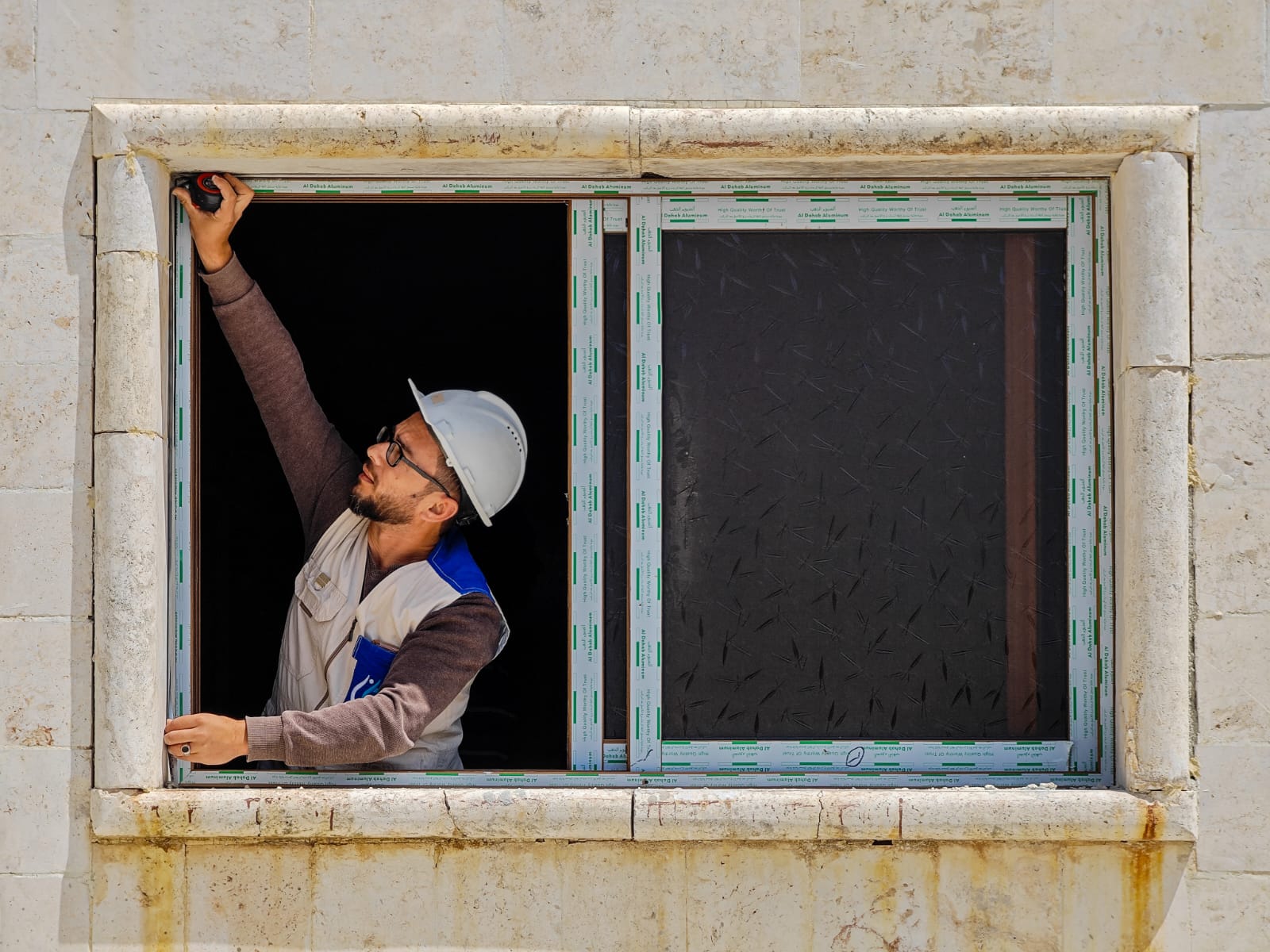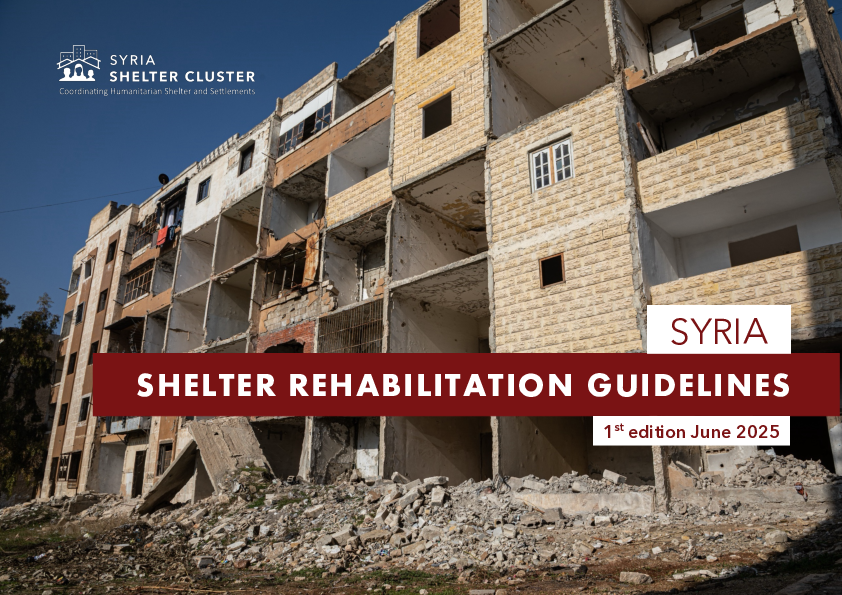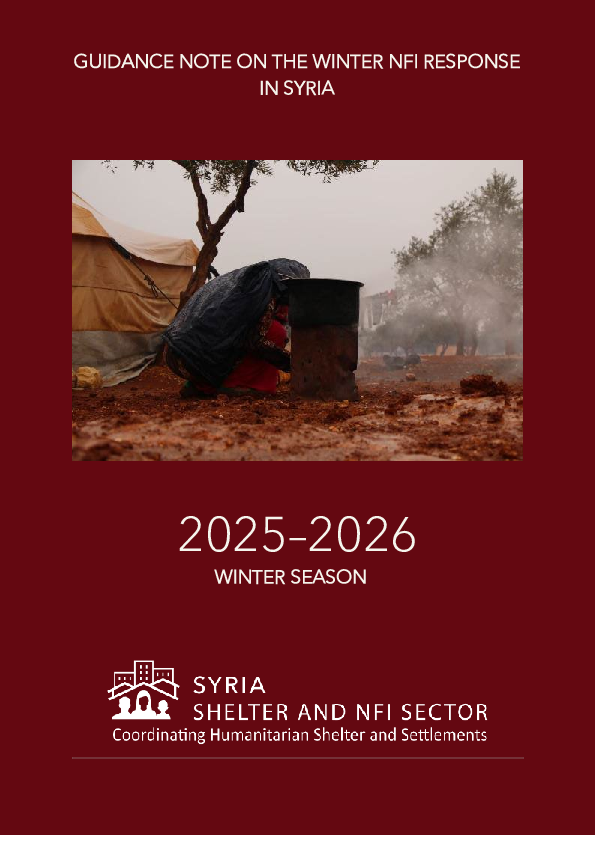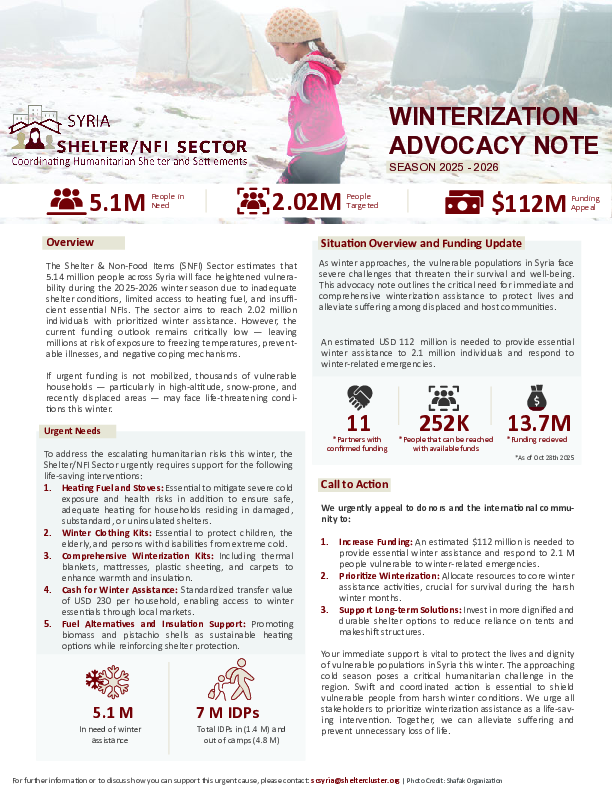Syria
Featured Documents
Overview
Fourteen years of conflict and displacement have devastated Syria’s infrastructure, rendering many towns uninhabitable and leaving public services barely functional. Critical infrastructure—including schools, hospitals, water networks, roads, and electricity—has sustained extensive damage. Meanwhile, the economy continues to decline. Over 90% of the population now lives below the poverty line, and more than 16.5 million people require humanitarian assistance. More than half of them are unable to access or afford sufficient food.
Displacement remains a pressing concern, with some internally displaced persons (IDPs) experiencing secondary displacement. As of March 25, 2025, the total number of IDPs stands at 674,000, comprising 462,000 newly displaced and 212,000 experiencing secondary displacement. The highest concentrations of IDPs are in Idlib and Aleppo governorates, with 271,600 and 104,300 individuals respectively.
While displacement continues, IDP return movements have seen a modest increase. In recent weeks, the number of returnees has reached 1.1 million. This includes 462,000 individuals displaced prior to November 27, 2024, and 333,000 who returned from IDP sites. Return movements are mainly concentrated in Aleppo governorate, with 435,600 returnees, and Hama governorate, with 176,900 returnees.
In northwest Syria, around 2 million IDPs reside in more than 1,500 camps or informal settlements. Of these, 700,000 are living in substandard shelters and facing harsh winter conditions. This vulnerability is compounded by widespread housing destruction from both the prolonged conflict and the February 2023 earthquakes. On April 27, 2025, CCCM Cluster Site Monitoring Teams reported the departure of 333,081 IDPs (63,301 households) from IDP sites since December 8, 2024. Most of these movements involve single-family units or male adults returning to reunite with family members or assess the condition of their homes.
In response to the significant changes in Syria’s situation since December 8, 2024, the humanitarian community has begun adapting the Whole of Syria (WoS) coordination framework to align with a unified IASC country approach. As part of this process, the Shelter/NFI Cluster has unified its operations across Northeast Syria (NES), Northwest Syria (NWS), and the Humanitarian Country Team (HCT) hubs.

Winterization
The Shelter & Non-Food Items (SNFI) Sector estimates that 5.14 million people across Syria will face heightened vulnerability during the 2025-2026 winter season due to inadequate shelter conditions, limited access to heating fuel, and insufficient essential NFIs. An estimated USD 112 million is needed to provide essential winter assistance to 2.1 million individuals and respond to winter-related emergencies. If urgent funding is not mobilized, thousands of vulnerable households — particularly in high-altitude, snow-prone, and recently displaced areas — may face life-threatening condit ions this winter.
Immediate Needs
Urgent shelter and NFI needs span both emergency and recovery contexts: -
-
Housing repairs and rehabilitation for returnee families whose homes are damaged, looted, or unfinished.
-
Rental support and transitional shelter for households whose homes are destroyed.
-
Essential NFIs, including blankets, mattresses, solar lighting, and winterization supplies—particularly critical in emergency collective centres in the northeast and camps in the northwest.
-
Tent replacement and emergency sealing-off kits for IDPs in substandard shelter, especially those currently housed in schools.
-
Infrastructure rehabilitation, including flood mitigation systems and access roads in camps, and risk reduction measures for areas vulnerable to climate hazards.




